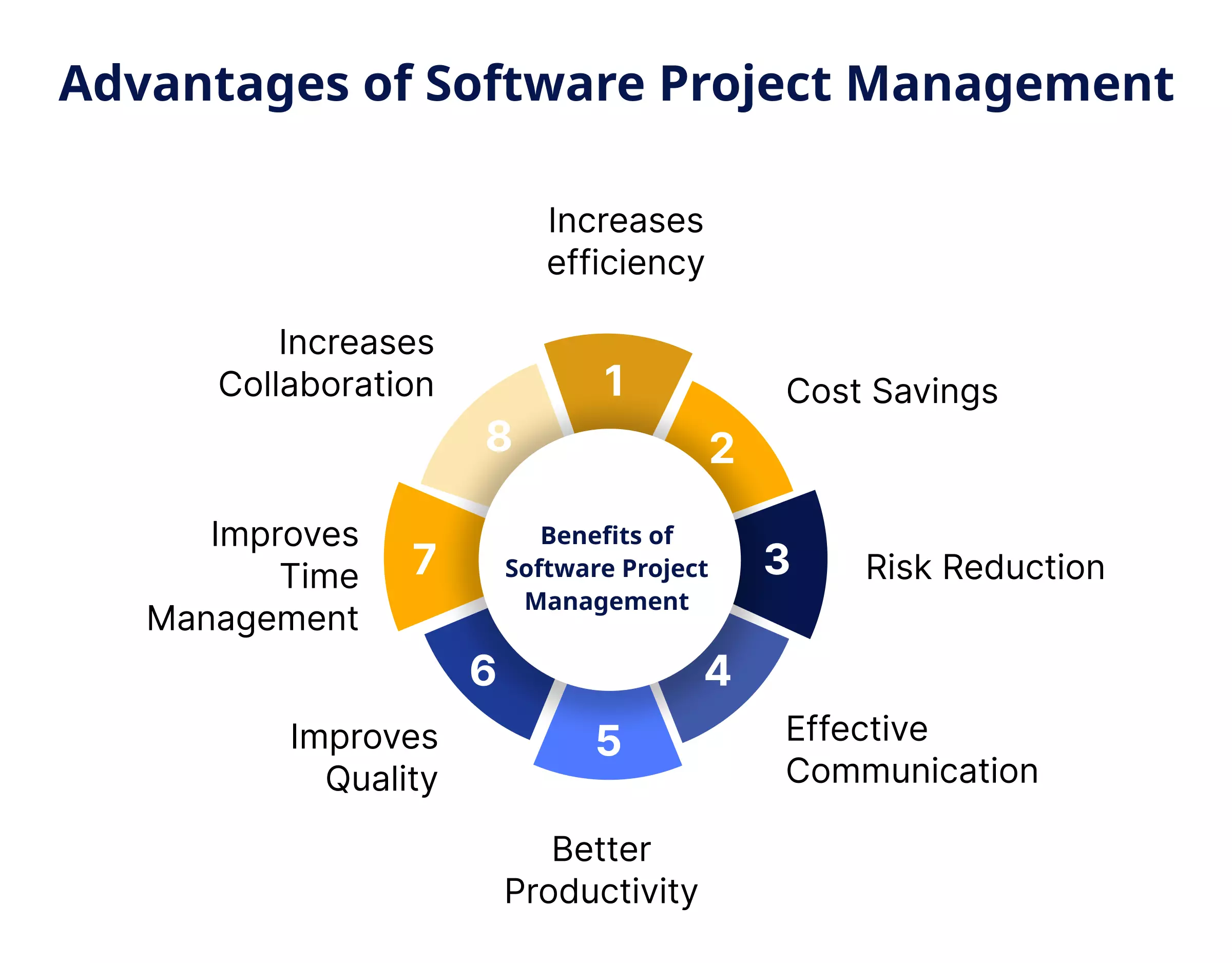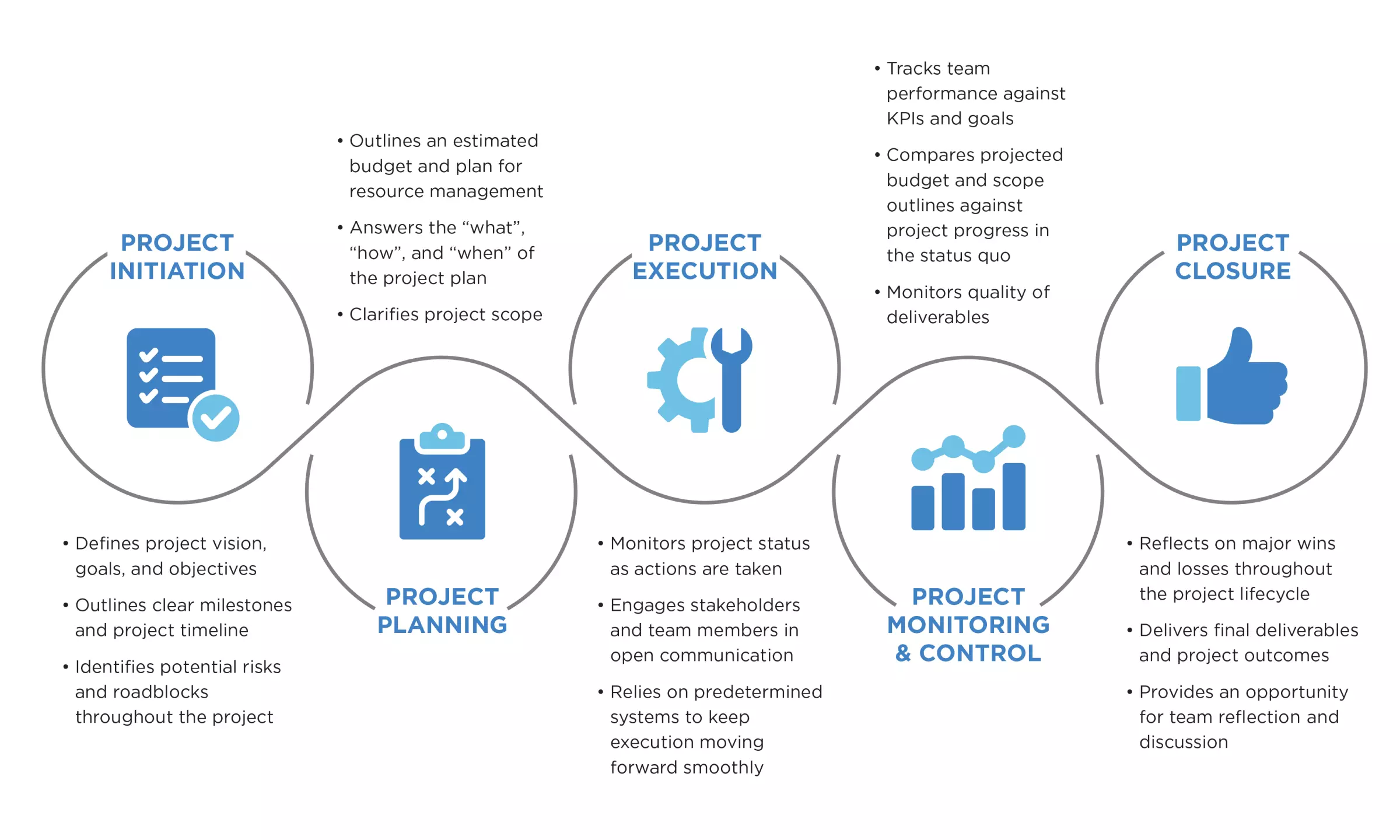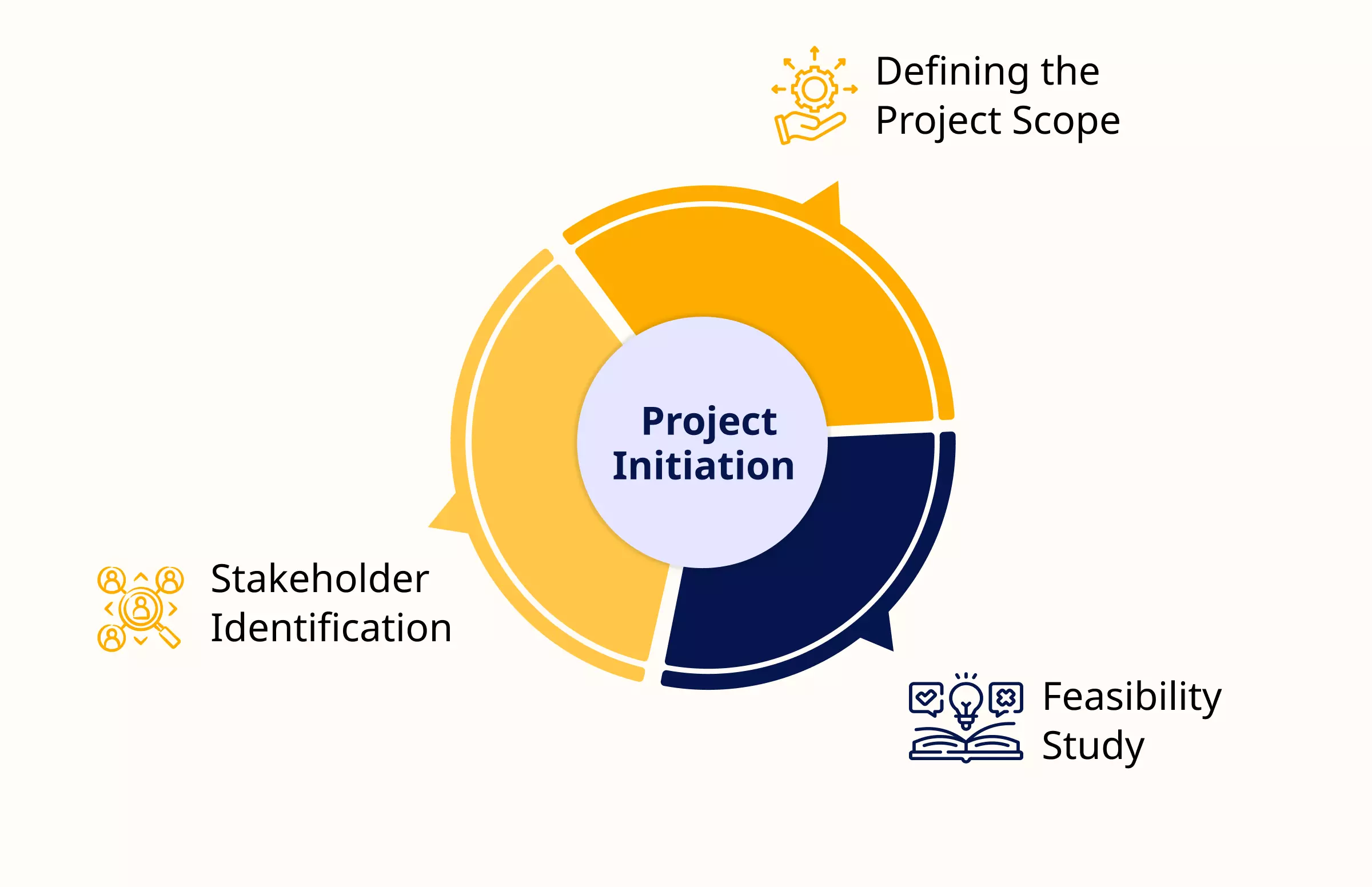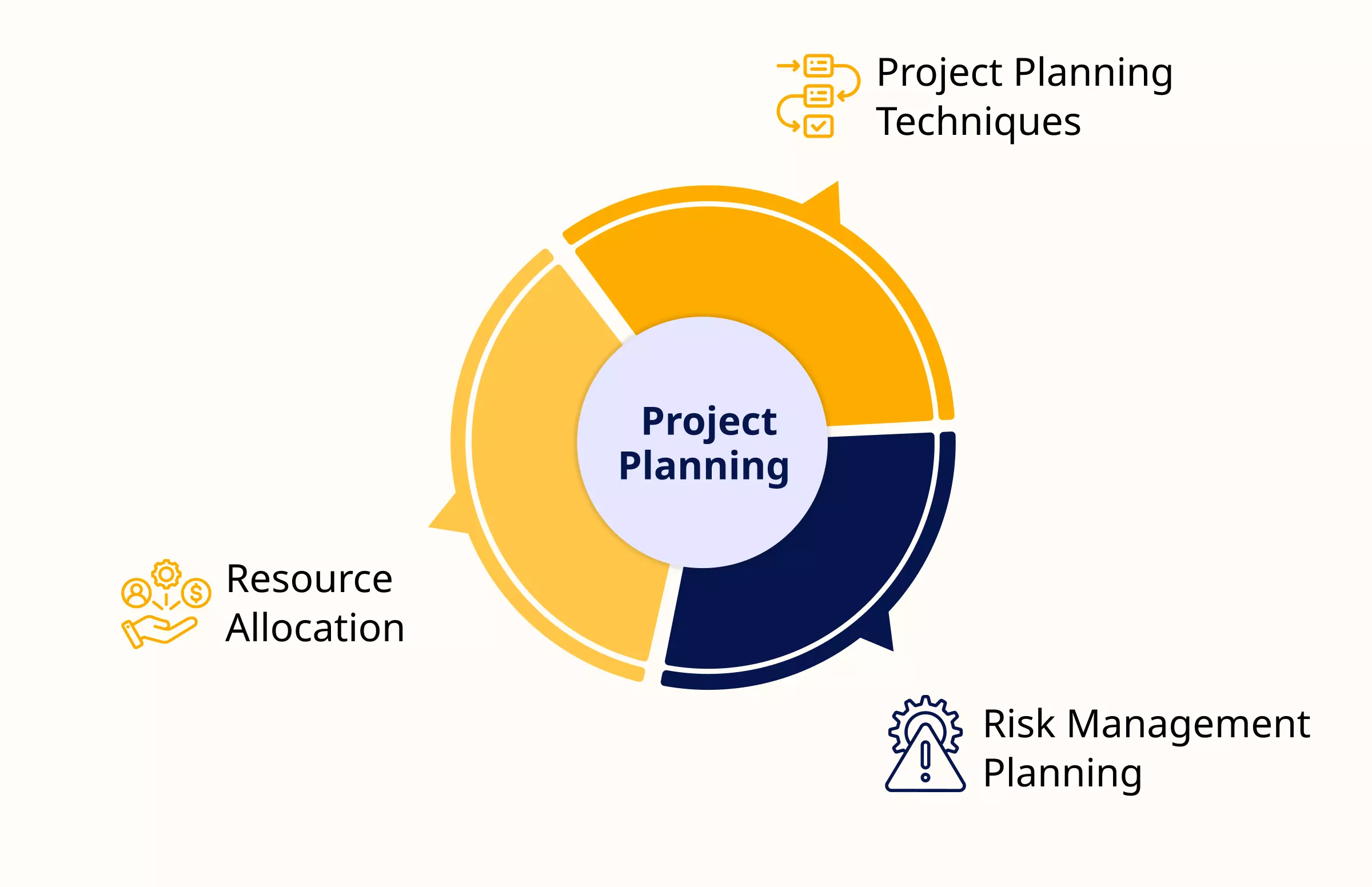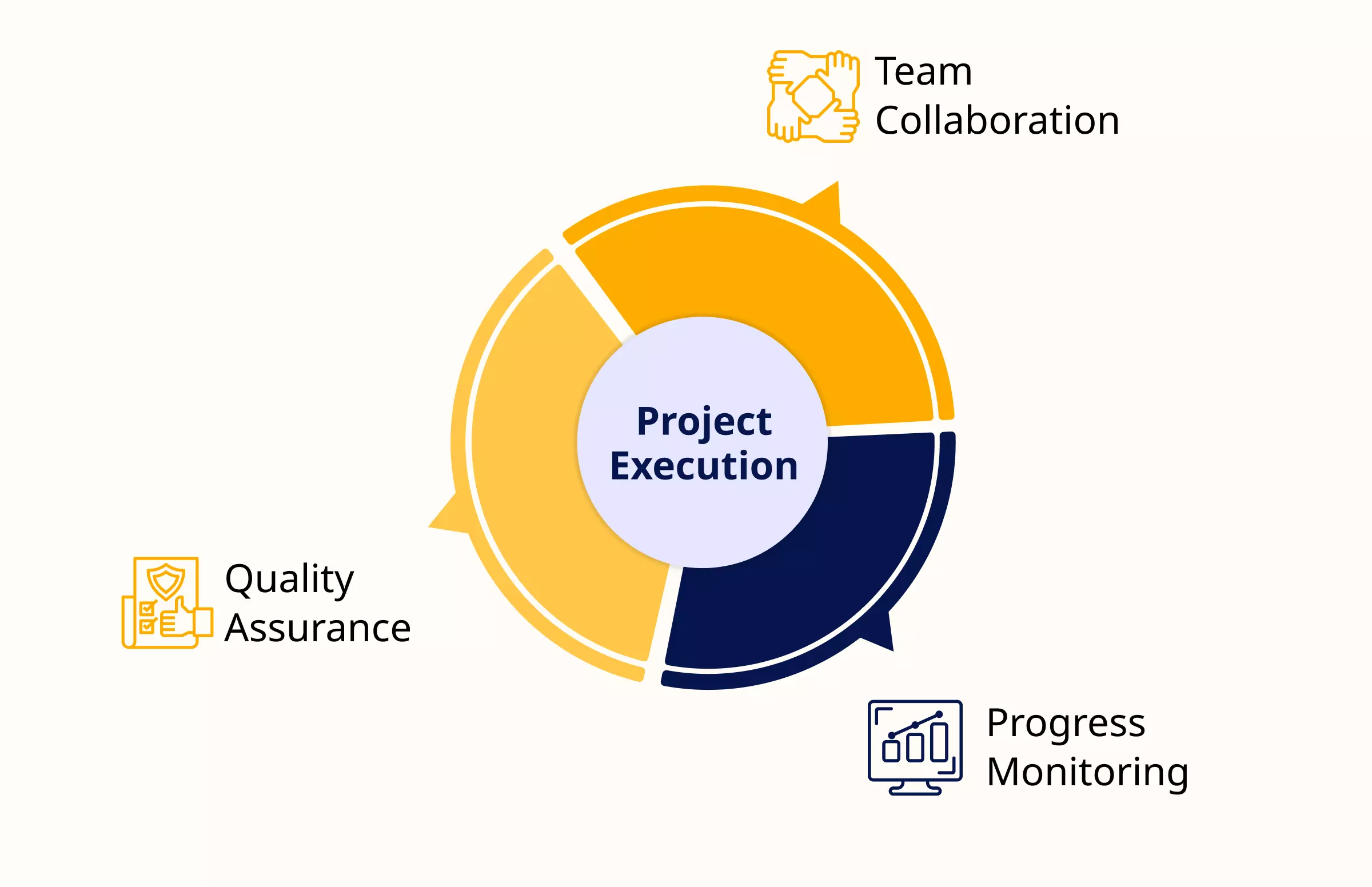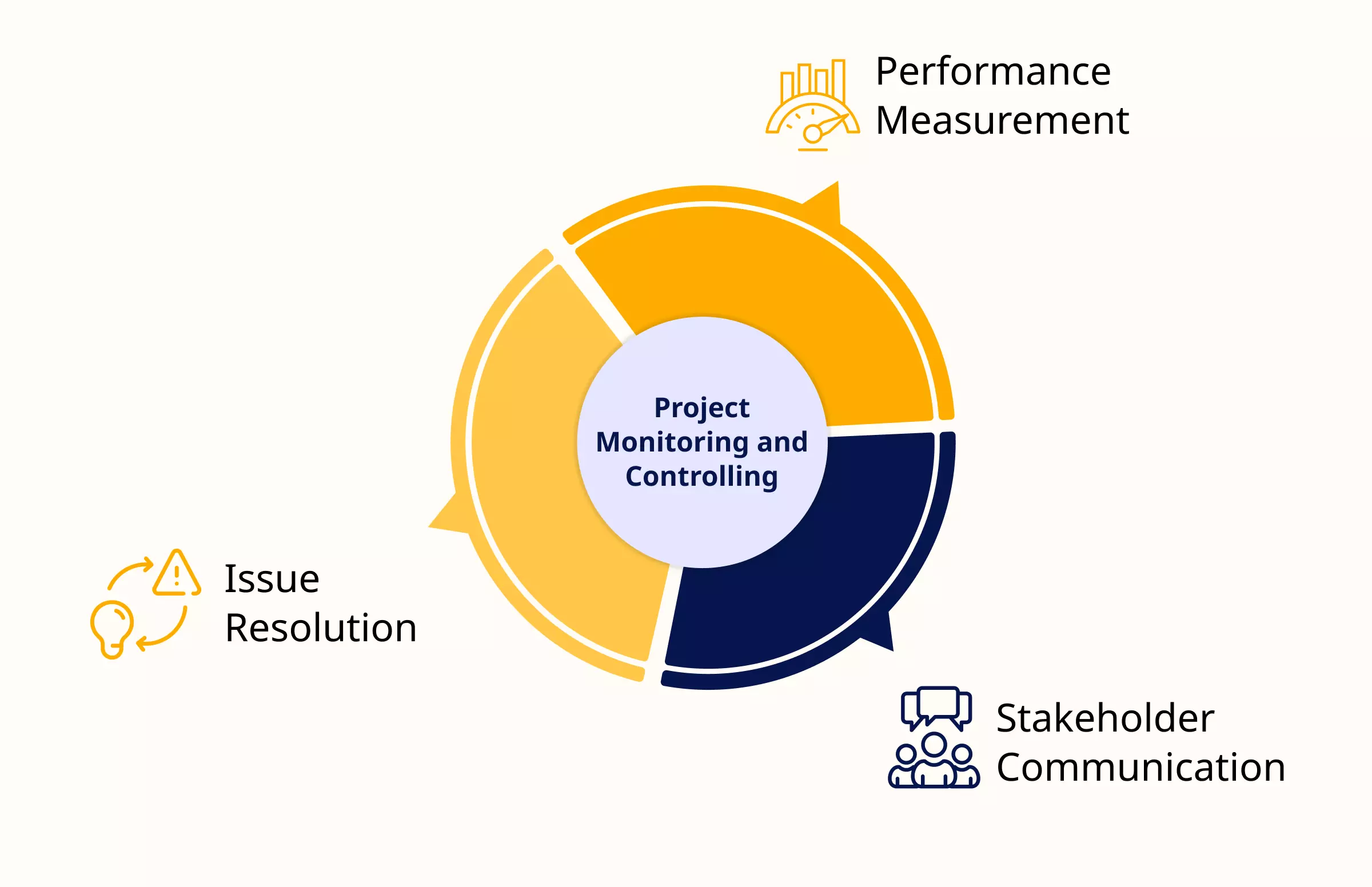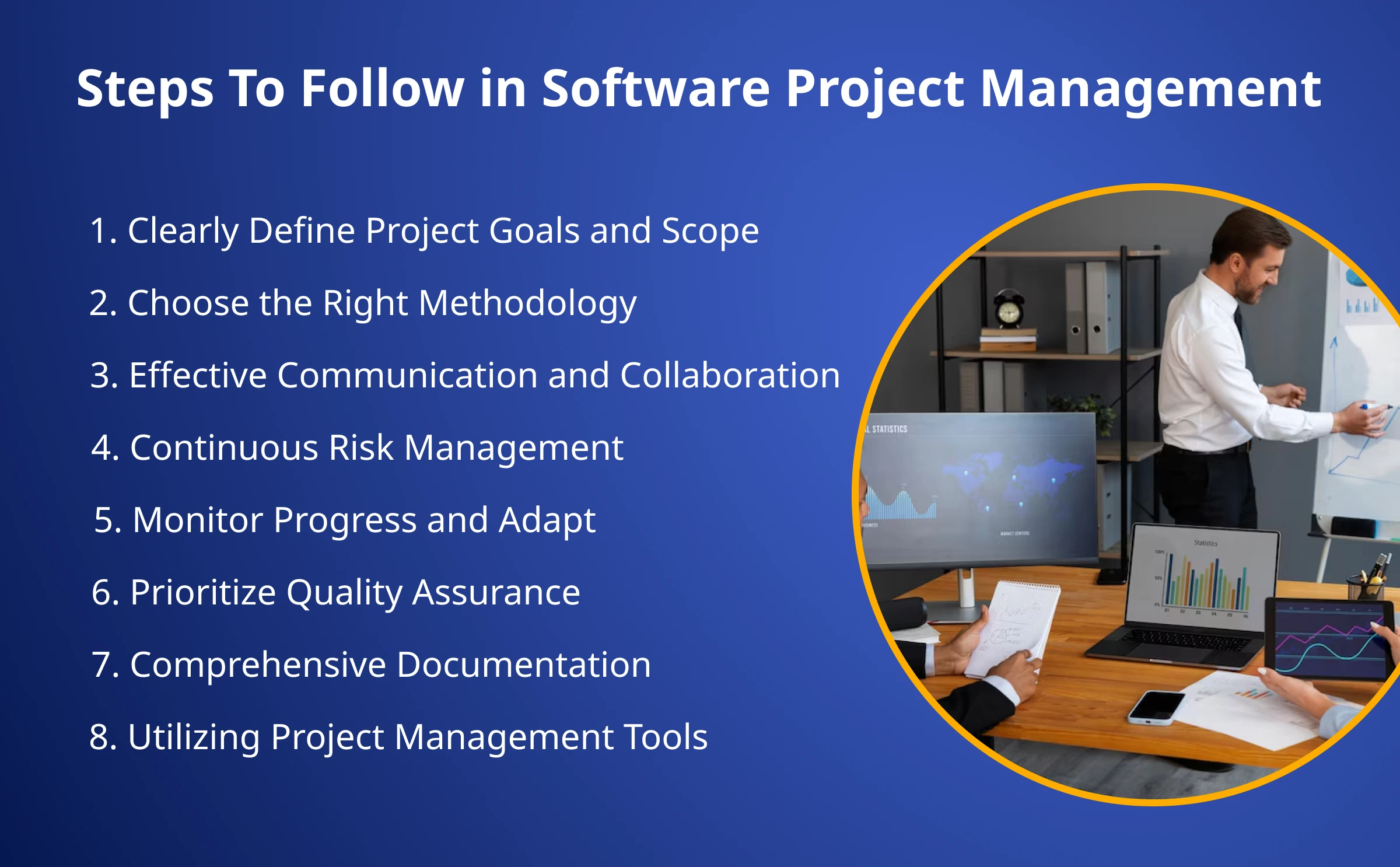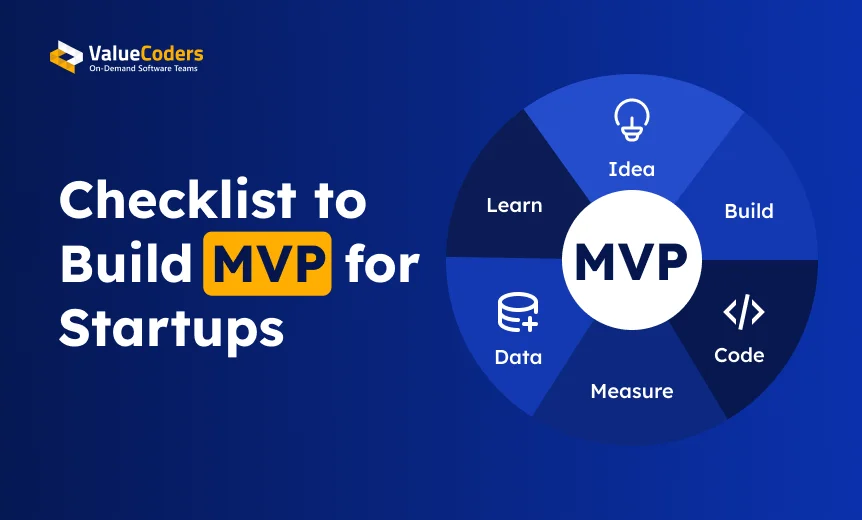Successfully managing a software project is a challenging job for digital agencies. With tight deadlines, shifting priorities, and evolving client demands, things can go wrong. Hence, mastering the art of software project management is the ultimate need of the hour.
When a project is divided into manageable stages, it becomes easy to control the project and the quality of the output. This structured approach helps reduce risks, improve efficiency, and ensure smoother transitions between development phases.
Let’s break down the key phases of software project management, from initial planning to final delivery.
Also, explore the best practices in project management that can help navigate challenges, optimize workflows, and keep your project on track.
Software Project Management: Why it Matters for Digital Agencies
If you’re wondering what is software project management, know that it’s about much more than just ticking boxes.
It involves planning, executing, and overseeing software development projects. It involves managing resources, timelines, and budgets and ensuring the project meets its objectives.
It provides structure and accountability to ensure all team members know their roles and responsibilities. You may hire developers for startups who can help mitigate risks and manage changes effectively.
Top Benefits of Software Project Management
For software development agencies, project management ensures efficient resource allocation, adherence to delivery timelines, and streamlined workflows. Check out the key benefits given below:
1. Increases efficiency: Project management systems standardizes workflows and job distribution to enhance team productivity.
2. Cost Savings: Avoids cost overruns by controlling the budget and expense.
3. Risk Reduction: Helps identify early risks and implement measures to avoid or mitigate them.
4. Effective Communication: Enables better communication with stakeholders, developers, and clients.
5. Better Productivity: Clearer guidelines and objectives, as well as progress tracking, increase team productivity.
6. Improves Quality: Regular reviews and testing ensure that the final product is up to quality.
7. Improves Time Management: Helps optimize schedules to deliver the project on time.
8. Increases Collaboration: Encourages teamwork and collaboration by ensuring all members work towards common project goals.
Efficient project management ensures faster delivery without compromising quality.
The 5 Phases of Software Project Management
According to the PMBOK Guide (Project Management Body of Knowledge) by the Project Management Institute, project management phases are divided into the following listed five key stages which make a complete project life cycle.
- Initiation
- Planning
- Execution
- Monitoring
- Closing
Software project management uses these phases to improve software product quality. These phases of project management are executed in a specific manner and have a particular deliverable.
The project team conducts a review at the end of the software product development life cycle. This helps in improving the overall performance of the final product. The 5 phases of project management are explained below:
Img src: projectmanagement
Phase 1: Project Initiation
This is the first phase of the software project where the whole project charter is defined and stakeholders are identified. In the initiation phase, you may have the following questions:
- How to begin the project initiation phase?
- What will be the key performance indicators (KPIs)?
- How will you know if your software project on track?
Start the first phase by developing a blueprint document of what exactly to be done. You must ensure:
Defining the Project Scope
Clearly define the project’s scope. This involves setting clear objectives that outline what the project aims to achieve. The project scope also establishes boundaries, ensuring all team members know what’s included and outside the scope.
Feasibility Study
It analyzes both technical and financial viability. This ensures the required resources, skills, and budget are available. It also helps identify potential risks or roadblocks early on, saving time and costs in the long run.
Stakeholder Identification
This includes identifying the project sponsors, team members, clients, and end-users. Defining their roles and responsibilities helps establish clear communication lines and sets the expectations for each stakeholder’s involvement throughout the project lifecycle.
Pro tip: ValueCoders helps you create a complete project charter to share with all stakeholders.
Our structured approach minimizes delays and unexpected costs in your software projects.
Phase 2. Project Planning
This is one of the most crucial phases of project management, and hiring IT project managers can help create a detailed project plan. This involves the following questions:
- What project planning techniques will be used?
- What risks are involved and how to manage them?
- Why is there need for effective resource allocation?
This phase covers everything from planning to risk management. Here’s what you must know:
Project Planning Techniques
Choosing the right project management methodology ensure the team follows a clear roadmap that aligns with the project’s complexity and goals for smooth project execution. Some common approaches include:
- Agile: A flexible, iterative approach that adapts to change and emphasizes continuous feedback.
- Waterfall: A linear, sequential methodology that works well for projects with clearly defined requirements from the start.
- Hybrid: A blend of both Agile and Waterfall to leverage the strengths of both methods.
Resource Allocation
Effective resource allocation involves assigning the right people, tools, and materials to each task. The responsibilities of project managers involve considering team member expertise, availability, and workload distribution.
This ensures that tasks are completed on time without overburdening the team and optimizes the use of resources such as software, hardware, and budgets.
Risk Management Planning
Every project has potential risks including technical, financial, or operational. During the planning phase, project managers identify these risks and develop mitigation strategies.
These strategies involve creating contingency plans, allocating additional resources, or implementing safeguards to minimize disruptions.
Remember: Proactive risk management keeps projects on track, even when unexpected challenges arise.
Also read: Latest Technologies Transforming Software Development
Phase 3. Project Execution
At this phase, project execution takes place while handling resources and managing stakeholder expectations parallelly. You can encounter the following questions before your project is carried out:
- What are the responsibilities of project manager?
- How do you ensure the good quality of the final product?
- Which tools do you use for monitoring the project’s growth?
The tools like project management software, communication tools, etc, are used to track progress, handle changes, and align the team accordingly. Here’s what you need to follow:
Team Collaboration
Teams can use tools like Slack, Microsoft Teams, or Jira for effective collaboration, streamlining communication and ensuring everyone is aligned.
Regular stand-ups, sprint meetings, and status updates help keep the team on the same page, while clear channels for feedback ensure that issues are resolved promptly. By fostering open communication, project managers ensure tasks are completed efficiently and collaboratively.
Quality Assurance
Quality assurance (QA) involves setting and implementing standards to ensure the final product meets the required specifications and user expectations. This includes regular code reviews, automated testing, and adherence to best coding practices.
Continuous integration (CI) and continuous delivery (CD) pipelines can also be employed to detect and resolve defects early, ensuring a smooth path to delivery.
Progress Monitoring
Tracking progress is essential to ensure the project stays on schedule and meets its objectives. Project managers can use Gantt charts, Kanban boards, or time-tracking software to monitor milestones and deliverables.
Regularly reviewing key performance indicators (KPIs) and progress reports allows managers to adjust resources, timelines, or scope to keep the project on track.
At ValueCoders, our experts use SMART and CLEAR approaches to streamline processes and ensure not just completion but success that is both measurable and repeatable.
Avoid scope creep and keep your projects on track with our expert project management practices.
Phase 4. Project Monitoring & Controlling
This phase is usually carried out in parallel to the execution phase. Software quality, cost/time allocations and project scope are monitored in this phase. You must observe the following questions:
- Are you measuring the project’s performance?
- What if there is any unexpected changes/issues occur?
- How does effective communication help in this phase?
You have to catch the issues before it turns to a big problem. Here’s what you need to look for:
Performance Measurement
Key Performance Indicators (KPIs) and metrics such as budget adherence, timeline progress, and task completion rates are used to monitor success rates.
Tools like Earned Value Management (EVM) or project dashboards provide real-time insights, enabling project managers to measure progress and make informed decisions when adjustments are necessary.
Issue Resolution
Unexpected issues or changes may arise in any project. Effective issue resolution involves identifying problems early and applying strategies to mitigate them. This includes adjusting the project scope, reallocating resources, or updating timelines.
Change management processes, such as documenting change requests and evaluating their impact, ensure that changes are handled systematically without disrupting the project’s overall flow.
Stakeholder Communication
Regular status updates, detailed reports, and presentations give stakeholders visibility into the project’s progress, challenges, and next steps.
Effective communication helps manage expectations, build trust, and ensure all stakeholders are on the same page. It reduces the risk of misunderstandings and ensures continued support throughout the project.
Pro tip: Hire dedicated software developers who use advanced tools to track project performance against initial KPIs and make informed decisions.
Also read: 5 Steps To Successfully Outsource Your Software Projects
Phase 5. Project Closure
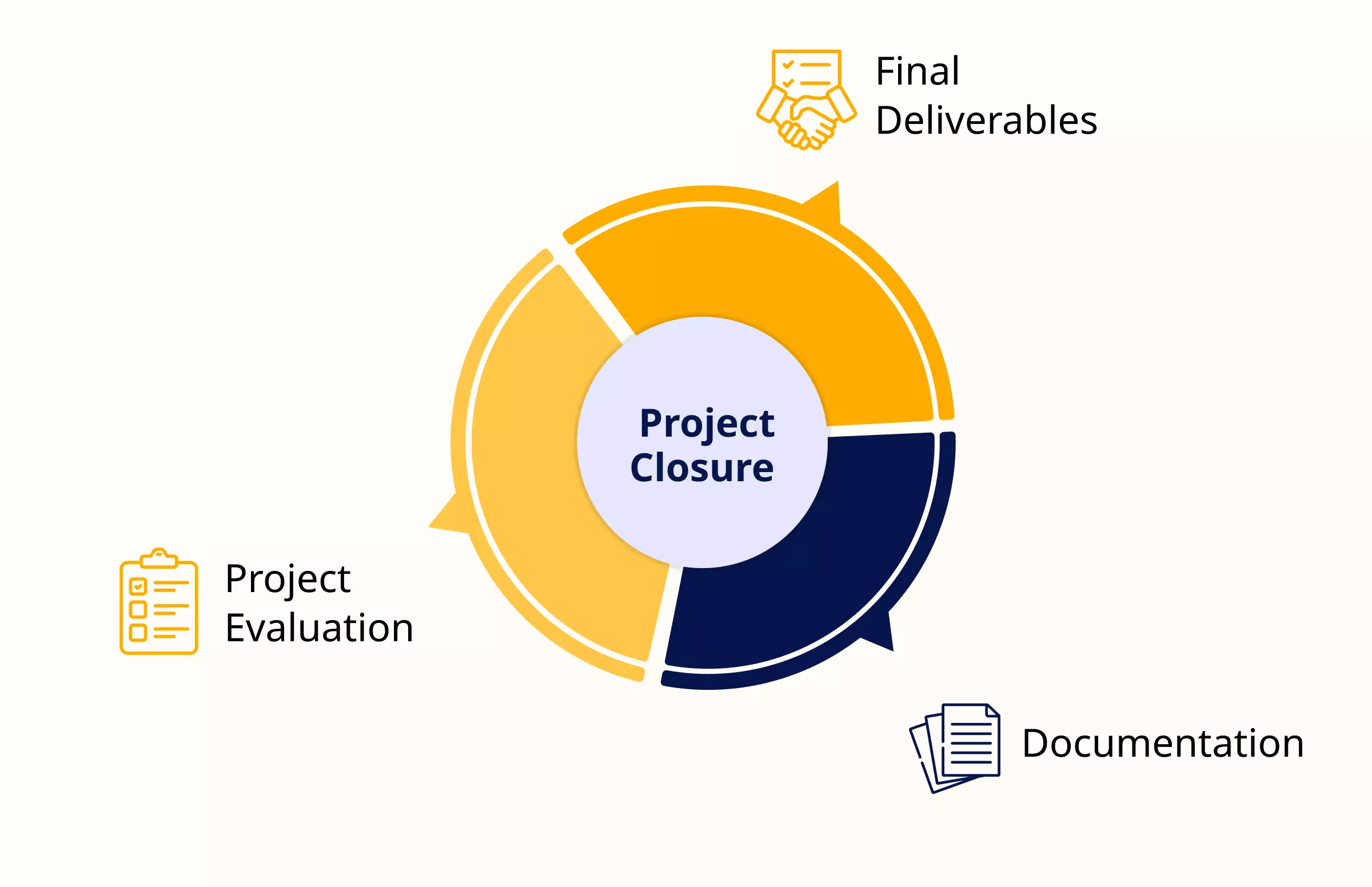
- Did you follow everything in your project management plan?
- Is the customer happy?
- What went well, and What could have been improved?
This phase provides a golden opportunity for learning and growth. Stakeholders are instructed to complete the project, and all related resources are returned to their managers. Here’s what you need to look for:
Final Deliverables
This phase begins with the completion and handover of the final deliverables to the client or end-users. This step ensures all project objectives are met and the product functions as expected.
A formal sign-off from stakeholders typically follows, marking the official end of development and transitioning into maintenance or support, if necessary.
Project Evaluation
Once the project is complete, conducting a post-mortem analysis is essential. This evaluation examines what went well, what challenges were faced, and what could be improved in future projects using software development services.
Lessons learned are documented and shared with the team to refine processes and avoid repeating mistakes in future endeavours, ensuring continuous improvement in project management practices.
Documentation
This includes finalizing project reports, technical documentation, user guides, and any relevant records that clarify the project’s lifecycle.
Proper documentation not only serves as a reference for future projects but also helps with troubleshooting and knowledge transfer if the team or stakeholders change in the future.
Pro tip: ValueCoders simplifies gathering all project documents for final review, ensuring that everything from project deliverables to reviews is organized and accessible.
Boost productivity and keep your team aligned with the right communication strategies and tools.
Best Practices in Project Management
The following strategies for software project management aim to enhance project efficiency, minimize risks, and foster collaboration, ensuring success for a custom software development company.
1. Clearly Define Project Goals and Scope
Setting clear, well-defined goals is essential to avoid ambiguity and ensure the team understands the project’s objectives.
A detailed project scope helps manage expectations, reduces the risk of scope creep, and keeps the team focused on the desired outcomes.
2. Choose the Right Methodology
The appropriate project management methodology (Agile, Waterfall, or Hybrid) aligns the team’s approach with the project’s needs.
Agile is ideal for flexibility and continuous feedback, while Waterfall works best when requirements are well-defined upfront. The correct methodology can streamline processes and enhance team productivity.
3. Effective Communication and Collaboration
Open and transparent communication is critical to project success. Use collaboration tools, regular meetings, and clear communication channels to ensure everyone is on the same page.
Encourage feedback and create an environment where team members and stakeholders can share ideas and raise concerns early.
4. Continuous Risk Management
Identifying risks early and continuously throughout the project lifecycle helps prevent surprises that could derail progress.
By developing contingency plans and actively monitoring risks, project managers can respond swiftly to any issues and minimize their impact on the project.
5. Monitor Progress and Adapt
Regularly tracking progress against milestones and critical metrics allows project managers to assess whether the project is on track.
If delays or issues occur, be ready to adapt by reallocating resources or adjusting timelines. Flexibility is crucial to keeping the project moving forward without compromising quality.
6. Prioritize Quality Assurance
Quality should be a priority throughout the project, not just at the end. Implement regular testing, code reviews, and quality checks at each stage of development to ensure that the final product meets both technical standards and stakeholder expectations.
This proactive approach prevents costly fixes later in the project.
7. Comprehensive Documentation
Thorough documentation is key to preserving the knowledge gained during the project for future reference.
This includes technical documentation, meeting notes, decisions, and changes in scope. Good documentation supports future projects, maintenance, and troubleshooting.
8. Utilizing Project Management Tools
Leveraging tools like Jira, Trello, or Asana to streamline task management, collaboration, and progress tracking.
These tools provide transparency and help teams stay organized with real-time insights into project developments.
Our risk management planning reduces project risks, helping you achieve better outcomes.
Conclusion
Together, the phases of project management and the best practices can significantly boost the success rate of any development project.
From initial planning to post-launch support, a structured approach enhances collaboration, minimizes risks, and ensures that the final product aligns with business goals and user needs.
By staying adaptable, prioritizing communication, and continuously refining processes, project managers can lead their teams to repeatedly deliver exceptional software solutions.
We take this to the next level at ValueCoders, one of India’s leading software product development company. With a proven track record of delivering software development services, we ensure seamless project execution tailored to your needs.
Let our experts turn your vision into reality with precision and efficiency. Contact us today.

